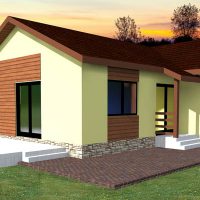3D Printer Technology
The 3D Printer or rapid prototyping system is a computer assisted manufacturing process where software guides the creation of three dimensional models. In the past model makers had to rely on plastic formers or metal modeling techniques to create replicas, reproductions and prototypes. But now because of the more advanced technologies that have been developed in the area of prototyping a new process known as rapid prototyping manufacturing is available.
The 3D printer technology available today allows the hobbyist to create custom designed 3 dimension models simply and easily in the comfort of their own workshop. Long and timely manufacturing processes have been eliminated by the 3D printer and at a reasonable price for the hobbyist.
3D Printer Technology and Model Creation
Traditional modeling techniques available to the hobbyist involved a long list of design steps and an even longer list of manufacturing steps. Imagine having a 3D printer that could reproduce from a computer assisted design (CAD) file a rare model train to add to your collection. The 3D printer would build the model train from the ground up with all the features of the original including the lettering and the correct color of paint.
Using liquid polymers extruded from injectors the 3D printer would craft a replica of the train that would be indistinguishable from the original design. By building the train layer upon layer the 3D printer software would calculate the proper length, width and height requirements from the specifications and the rapid prototyping process would produce a completed 3 dimensional model of the train. The 3D printer technology would enhance any hobbyist’s abilities and creativity.
3D Printer Advantages for Model Reproduction
The computer assisted design advantages of the 3D printer are numerous compared to traditional prototyping techniques. Traditional techniques that employed plastic formers to create models required large, bulky and sophisticated equipment which also required a major investment to own and operate. 3D printers however are reasonably sized, compact and much less expensive to own and operate. The set up time and ease of operation has made the 3D printer a popular choice for creating models and replicas. The almost unlimited flexibility and potential applications for the hobbyist to create models with the 3D printer is a distinct advantage of this technology.
Traditional modeling techniques carried some dangers inherent in the process. Some techniques involved hot metals being poured into molds while others heated toxic chemicals which were pressurized and cooled. The technology used in the 3D printer produces no toxic chemicals to harm the hobbyist nor uses any toxins during the prototyping process.
With metal modeling techniques a substantial amount of post production cleanup of the models and work area was needed. With the 3D printer an additional advantage is gained from using the rapid prototyping technology as post production work is drastically reduced. The advantages of the 3D printer for the hobbyist are many including creative flexibility, safety and ease of operation. The innovative designs that the hobbyist will be able to utilize with the 3D printer present a distinct advantage over traditional model and replica processing methods.



